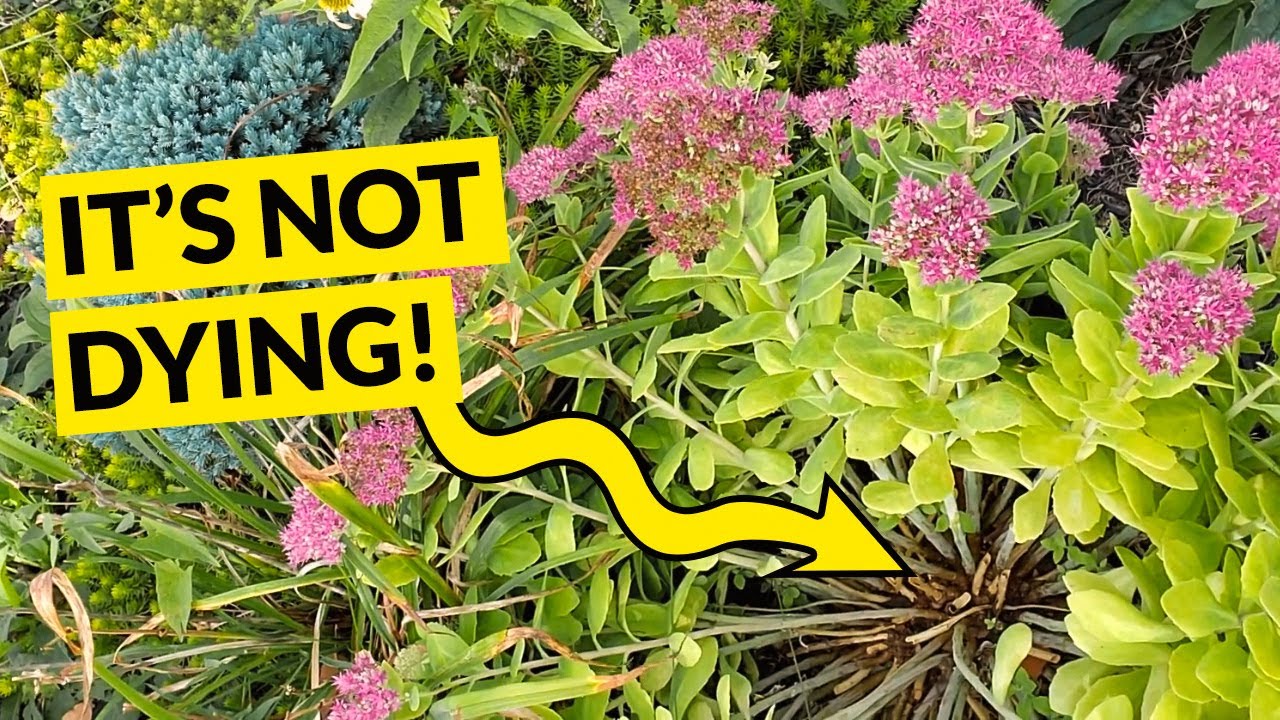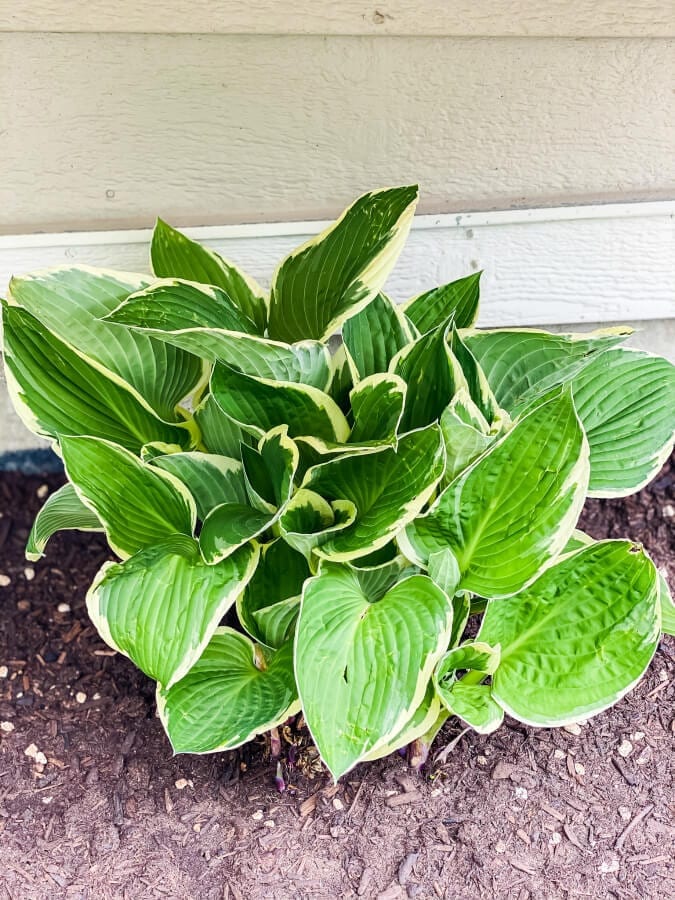Ok, let’s talk about a simple yet powerful technique that I personally love using to expand the plants in my garden and spread the joy of gardening: dividing hostas and sedum plants. (two of my favorite plants!)
Now, if you’re anything like me, you’re always on the lookout for ways to make your garden flourish and thrive. And let me tell you, dividing these beautiful perennials is like hitting the jackpot! It’s an easy-peasy method that not only helps you multiply your plants but also gives you the opportunity to share the gardening love with your friends and neighbors.
Sedum plants are a gardener’s dream. These succulent perennials are low-maintenance, drought tolerant, and bloom colorful flowers that attract pollinators. But after a few years, sedum plants tend to get overcrowded and can split apart. Dividing sedum plants is an easy way to keep them healthy and looking their best. In this article, I’ll explain when and how to divide sedum in 9 simple steps.
When to Divide Sedum Plants
Timing is important when dividing sedum The best time is in early spring, before new growth emerges Sedum plants are dormant at this time, so dividing them causes less stress.
-
Avoid dividing in summer when sedum plants are actively growing. This can shock them.
-
Dividing in fall, after flowering finishes, also works but regrowth will be slower
-
In general, divide sedum plants every 3-4 years to control size and maintain health.
Supplies Needed for Dividing Sedum
Gather these supplies before getting started:
- Sharp spade or knife to cut through roots
- Pruners to trim back foliage
- Tarp or plastic to hold plants
- Containers to temporarily hold divisions
- Water to keep sedum moist
Step 1: Cut Back the Foliage
Prune back the sedum plant’s leaves and stems to about 2 inches above the base. This makes it easier to access the roots. Discard trimmed foliage.
Step 2: Water the Plant Well
Water the sedum thoroughly 1-2 days before dividing. Moist soil helps release the roots. Avoid overly soggy soil.
Step 3: Dig Up the Sedum
Use a sharp spade to dig around the sedum plant, severing the roots from soil. Lift the entire plant and place on a tarp or plastic. Keep 3+ inches of roots intact.
Step 4: Divide the Clump
Turn the plant over to expose the roots. Use a clean, sharp knife or spade to cut the clump into smaller sections. Aim for 2-8 divisions depending on size.
Step 5: Cut Each Section with Roots
Make sure each new division has some visible roots attached. Rootless sections won’t be able to regrow when replanted. Discard any pieces without roots.
Step 6: Temporarily Store Divisions
Place divisions in containers with water or damp soil. Replant them as soon as possible to avoid drying out. Don’t leave them unplanted for long.
Step 7: Prepare the Planting Area
Choose a sunny spot with well-draining soil. Dig holes wider and deeper than each division’s root ball. Space holes 6-24 inches apart depending on variety.
Step 8: Plant the Divisions
Place each division in its hole, root-side down. The top of the root ball should be level with the ground. Fill in soil and lightly firm around roots.
Step 9: Water Thoroughly After Planting
Give newly planted sedum a generous soak until water pools on the surface. Then water moderately, only when soil feels dry 1-2 inches deep. Avoid overwatering.
Caring for Divided Sedum Plants
With proper care, divided sedum plants quickly establish and look beautiful within weeks:
-
Keep soil moist (not soggy) for the first few weeks after planting.
-
Apply organic mulch around plants to retain moisture and reduce weeds.
-
Fertilize with balanced, slow-release fertilizer once in early spring.
-
Watch for pests like slugs and treat accordingly. Diatomaceous earth helps.
-
Remove spent flowers to encourage continued blooming. Deadheading promotes plant health.
-
Avoid excess fertilizer which can cause floppy growth vulnerable to disease.
With a proper start and attentive care, divided sedum plants will flourish for years to come. Follow these tips for successful propagation and healthier, rejuvenated plants. Share the divisions with gardening friends too!

Can hostas be divided during summer?
While it’s possible to divide hostas in summer, it’s not ideal as the plants are in full growth. I recommend dividing them either in spring or fall when they’re mostly dormant to minimize stress on the plant and improve the chances of successful transplanting.
Dividing Hostas and Sedum Plants: Essential Garden Tips
Are you ready? Let’s dive in and let the propagation party begin!
Dividing hostas and sedum plants is a simple yet effective method for propagating these popular perennials. As a gardener, I often use this technique to increase the number of plants in my garden or share with fellow garden enthusiasts.
While the process may seem daunting initially, with some knowledge and practice, anyone can master this skill.
Hostas are prized for their lush foliage and ability to thrive in shady locations, making them a staple in many gardens.
On the other hand, sedum plants, also known as stonecrops, are valued for their drought tolerance and unique succulent leaves.
Both plants have a clumping root system, allowing for easy division and transplantation.

In a short time, your efforts will yield multiple healthy plants, ready to enhance your garden or be gifted to friends and family.
Dividing hostas should ideally be done in spring or early fall, and sedum plants are best divided in the early spring.
This timing reduces stress on the plants, ensuring better chances of successful propagation. With simple tools, such as a sharp knife, spading fork, and proper care, hostas and sedum plants can be divided and transplanted to create new thriving additions to any garden.
How to Transplant and or Spliting the Garden Plant “Autumn Joy Sedum”Sedum
FAQ
When should you split sedum?
Answer: Early spring is the best time to divide ‘Autumn Joy’ and other upright, clump-forming varieties sedum (Hylotelephium). Dig up plants in early spring just as new growth begins to appear. Divide each clump into sections with a sharp knife.
How do you encourage sedum to spread?
Creeping sedums can root along the stems, so dividing is a little different than the clumping sedums. In early spring, dig up the whole plant, cut it in half and reset one half of the plant back in the same whole. It will quickly regrow to fill in the blank area.
Do sedum plants need to be divided?
Sedum often grows in big clumps and needs to be divided to keep it from spreading too far. By properly cutting each division so that it has roots, you can successfully propagate new sedum plants. Dig up sedum in early spring. Since sedum blooms in late summer and fall, the plant should be dug up and divided in early spring.
How do you divide a sedum plant?
Lift the sedum out of the ground with your shovel. Once the plant’s roots are detached from the soil, push your spade underneath the plant and pull it out of the ground. Place the sedum plant on the ground nearby. Choose how many divisions to make. The size of your sedum plant will determine how many divisions you can make.
How often should you divide a sedum plant?
Dividing the plants can increase blooms and enhance plant health. Sedum should be divided every three to four years. Some growers also recommend dividing the plant after it has bloomed while the plant is actively growing. Recovery will be slower but these hardy little succulents should rebound fairly well. Separating sedum is a quick process.
